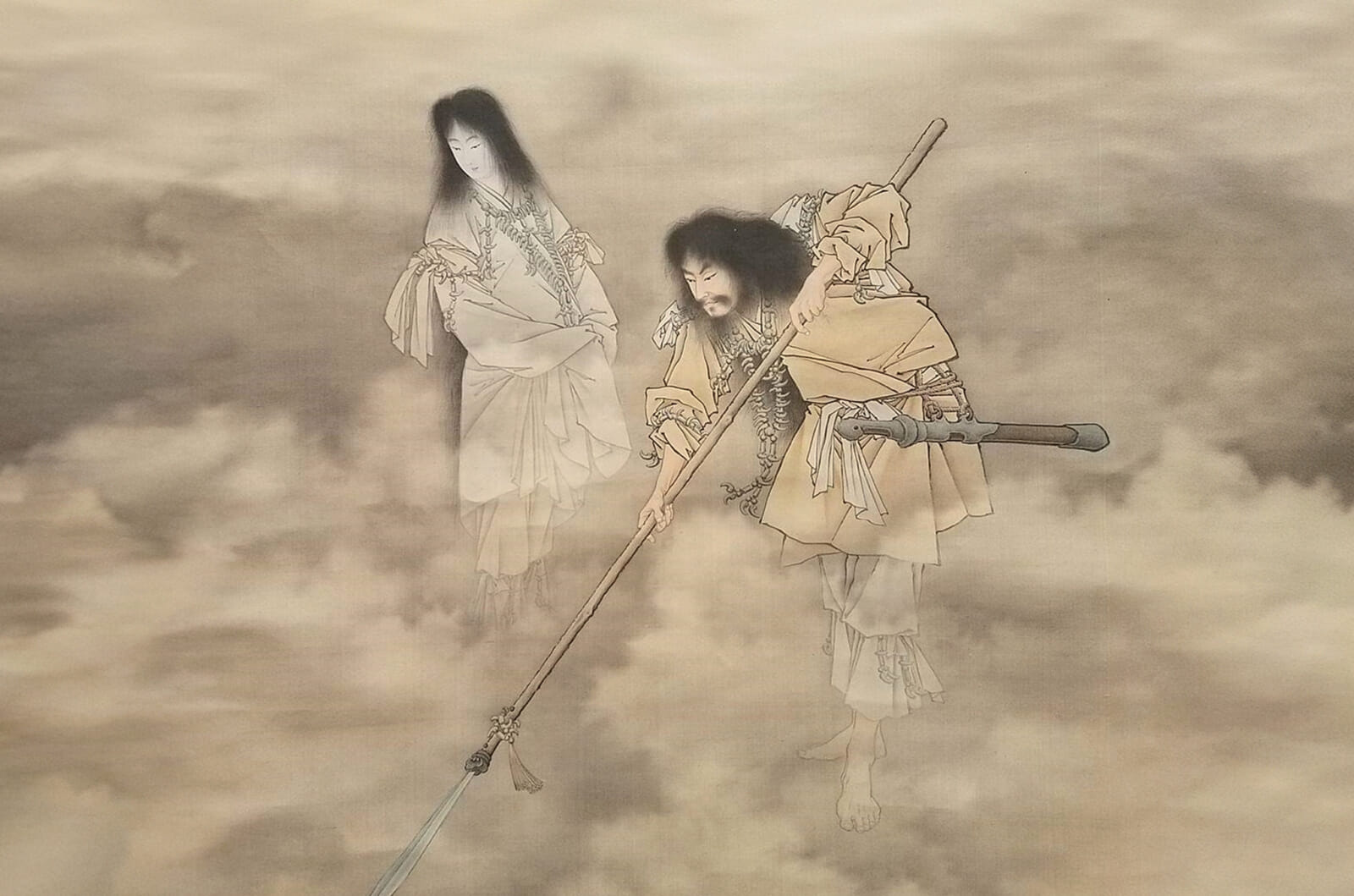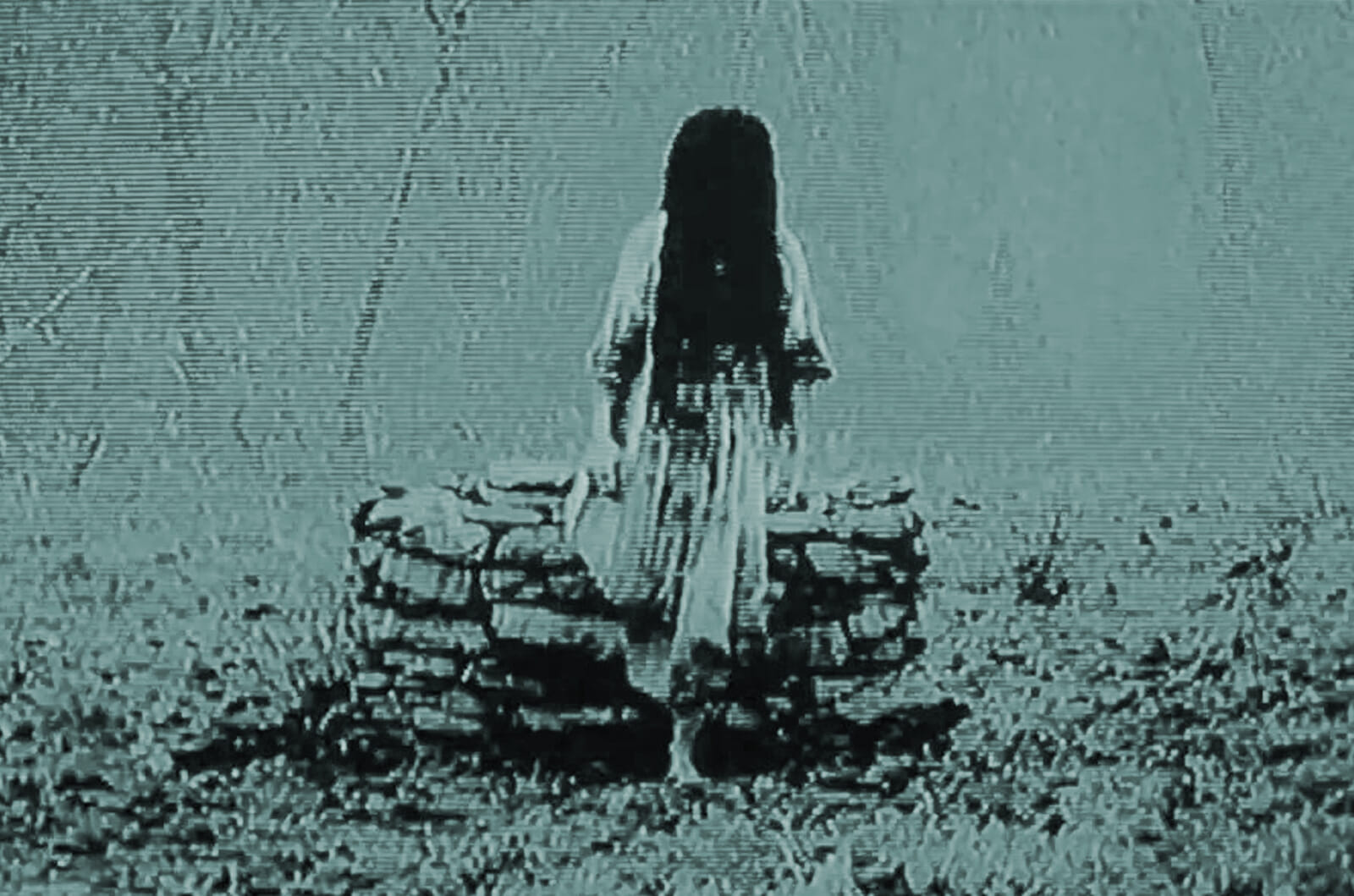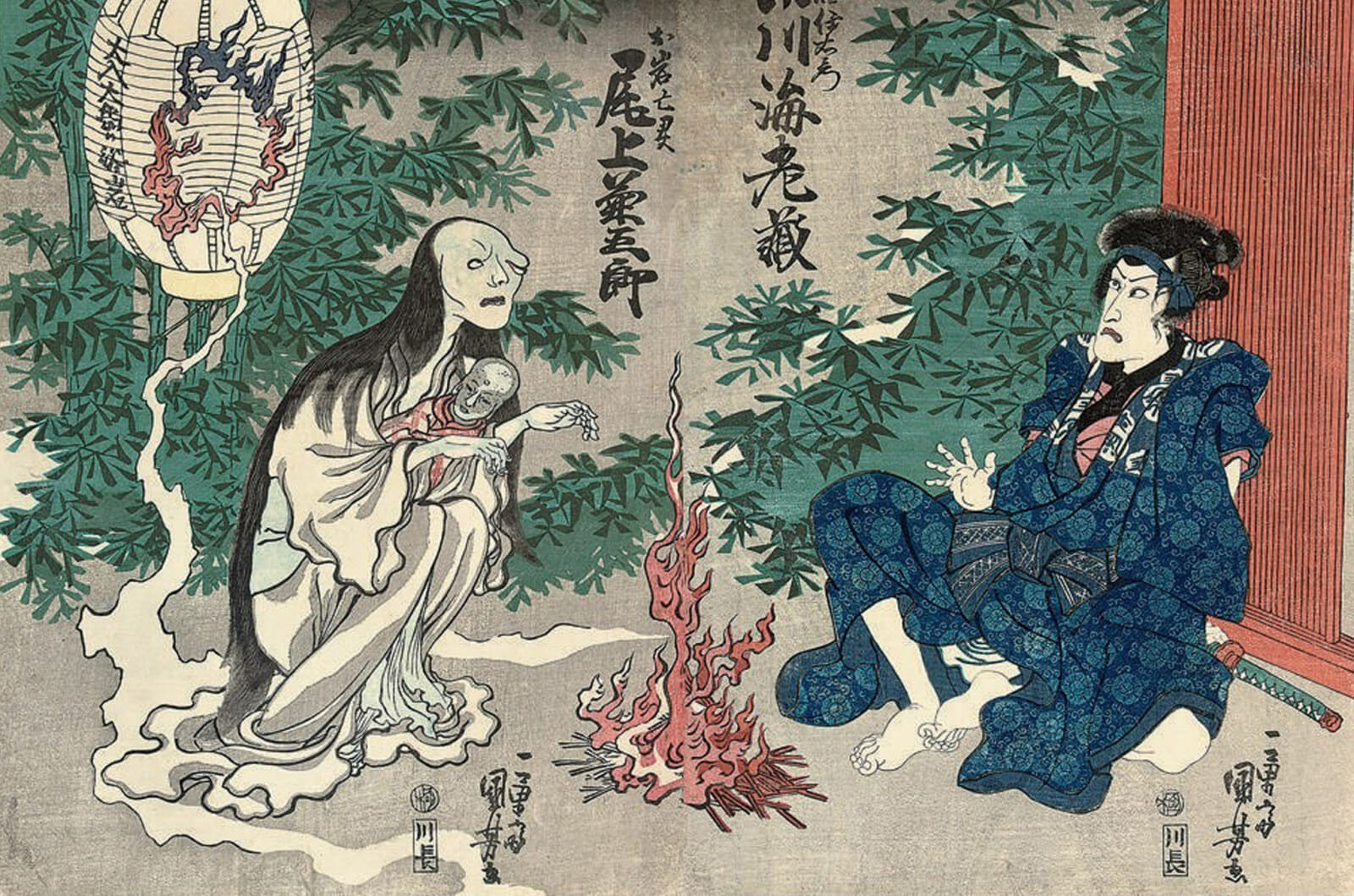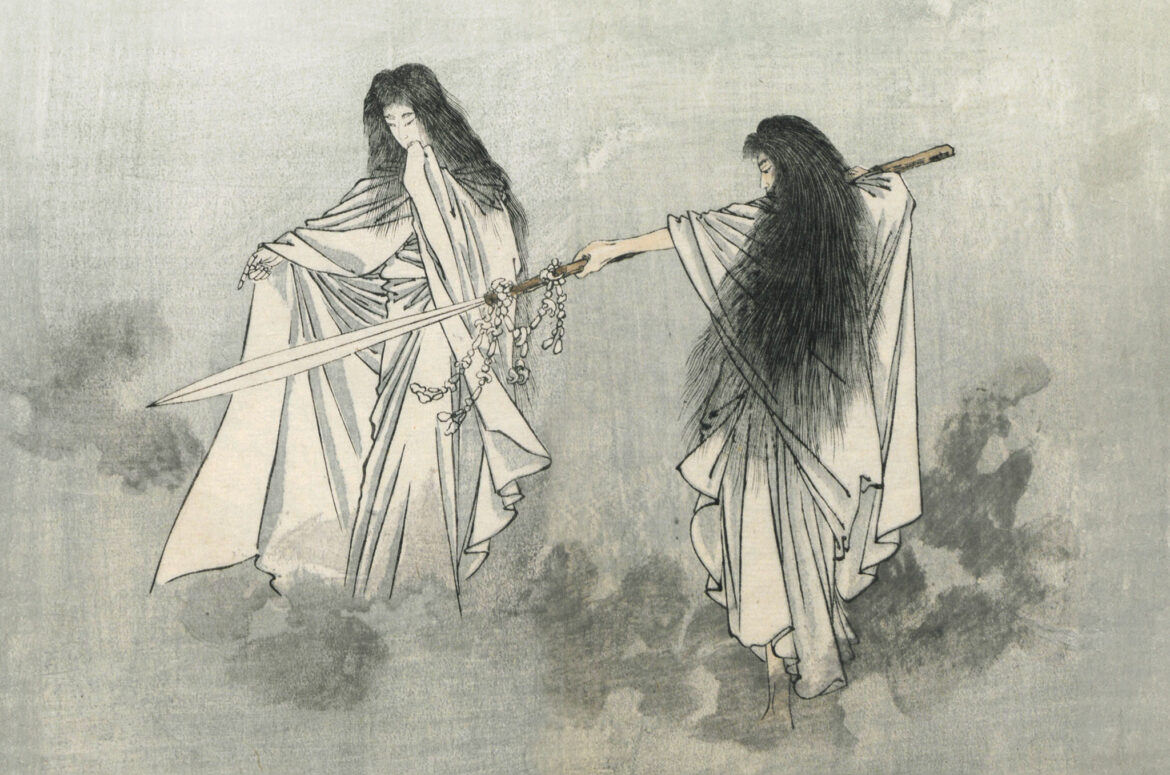The Kojiki and Nihon Shoki chronicles, both completed in the 8th century, are the oldest texts in Japan. These collections of genealogies, myths, and legends were meant to trace the imperial family’s lineage back to the gods, legitimizing their divine right to rule. But the two books did so much more — they preserved millennia-old stories, including the very first tale of fright and terror in Japanese history. Even if you’ve never read it, you may have felt its echo still haunting modern Japanese horror today — the ancient myth of Yomi.

Izanami and Izanagi by Kobayashi Eitaku (c. 1885)
Journey to the Japanese Upside Down
The deities Izanami and Izanagi are credited in the Kojiki and the Nihon Shoki as the creators of Japan, with Izanami literally birthing most of the Japanese islands into existence. Their blissful marital life is what modern horror would call the setup that’s instantly followed by the “wham” moment when Izanami gives birth to a god of fire and is fatally burned from the inside. But, also like in modern horror, “death” is only the beginning. Izanami descends to the Underworld, known as Yomi or Yomo, the land “of spitted game flesh.”
Missing his wife terribly, Izanagi ventures into Yomi to bring Izanami back. She tells him: “[Y]ou entering here fills me with awe and makes me yearn to return with you. I will speak for a while with the spirits of this land. In the meantime, do not look at me!”
You don’t need a semester of creative writing classes to figure out what happens next: Izanagi lights a fire, looks at his wife, and discovers that she’s become undead, with “squirming maggots slithering in and out of her body.” Enraged, the zombie goddess sends demonic hell hags (also described, somewhat rudely, in older translations as “Ugly Females”) after Izanagi who barely manages to escape Yomi.
This is where the story of Yomi ends and Japanese horror begins.

The Antagonist in The Ring (2002) Emerging from a Well of Water | © DreamWorks Pictures
The Land of Darkness Casts a Long Shadow
Yomi appears early in Book 1 of both the Kojiki and the Nihon Shoki, meaning Japanese literature quite literally started with a horror story, and that kind of thing leaves an impact. For centuries, the Shikome or Hisame hell hags were used as bogeymen — or, more accurately, bogeywomen — meant to scare Japanese children, while the rest of the myth made people think about what adults should fear.
Some might be surprised by how… biological Japan’s early legends are. The country, with its forests and mountains, wasn’t created with a heavenly snap of the fingers but was born from a goddess’ body, which can rot and decay.
It’s interesting because, as we’ve mentioned before, Japan isn’t really afraid of zombies and corporeal monsters. The story of Izanami and Izanagi isn’t about how gods adhere to the laws of nature. Rather, it’s about how nature — as the literal offspring of the gods — is divine. And, as we’ve seen, the divine can be wrathful and terrifying.
In Japanese horror, malevolent creatures may be spectral, but they are often connected to nature and the elements. It’s probably why Sadako from The Ring and Kayako from The Grudge carry a lingering water theme. Yomi might also explain why the two apparitions are virtually unstoppable, as are many Japanese horror icons. Because, in the end, so was Izanami. Her husband escaped but never defeated his undead wife, who’s still waiting below in the Underworld. Or maybe… she’s right behind you.

The Ghost story of Yotsuya by Utagawa Kuniyoshi (c. 1836)
A Spooky Sisterhood
Early paranormal entities that scared the tabi socks off the Japanese tended to be male, including the “angriest spirit in all of Japan” whose head is now buried in the center of Tokyo. However, many of them eventually got redemption arcs and were rehabilitated as “august spirits,” possibly because Japanese horror works best when it is female. It started with the undead Izanami and the hell hags, and it continued until nearly every famous Japanese ghost story starred women.
The Peony Lantern, The Dish Manor, The Ghost Story of Yotsuya are the three female-focused foundations of modern Japanese horror. Though their heroines are classified as onryo vengeful spirits, there is a lot of Izanami in them. Two were betrayed by men; all three straddle the border between the intangible world of ghosts and the physical world of the undead. One is even defined by her grotesque appearance. It’s all connected to the earliest literary works in Japan.
Otsuyu (The Peony Lantern), Okiku (The Dish Manor), Oiwa (Yotsuya), Sadako, Kayako, the Slit-Mouthed Woman, Hanako of the Toilet, the Vampire-Hair Women: they are all links in a long chain going back more than a millennium to the spine-chilling story of Yomi.
Related Posts
Discover Tokyo, Every Week
Get the city’s best stories, under-the-radar spots and exclusive invites delivered straight to your inbox.


AloJapan.com